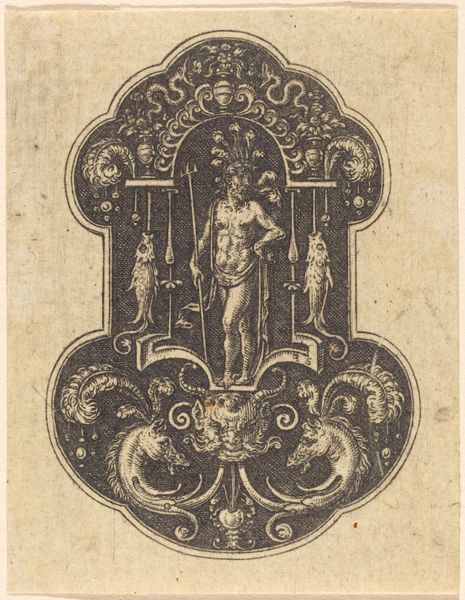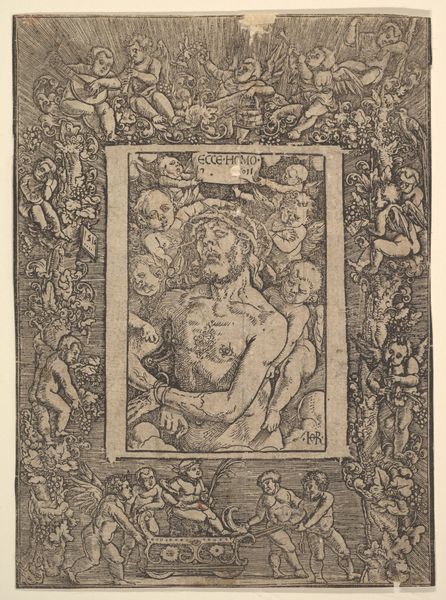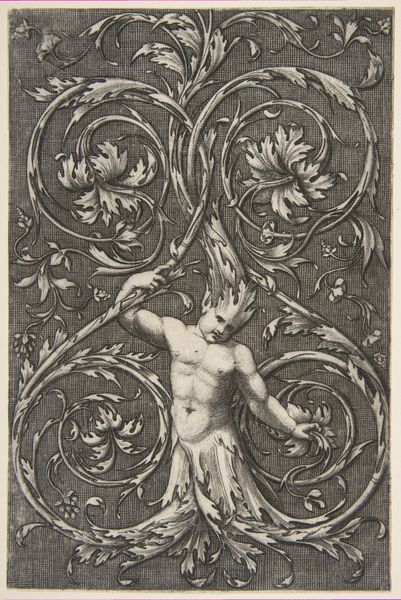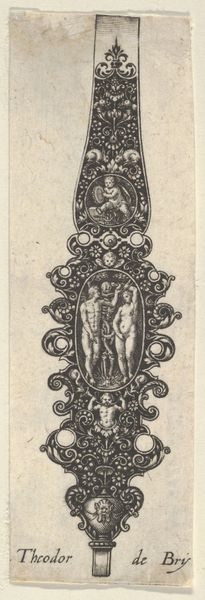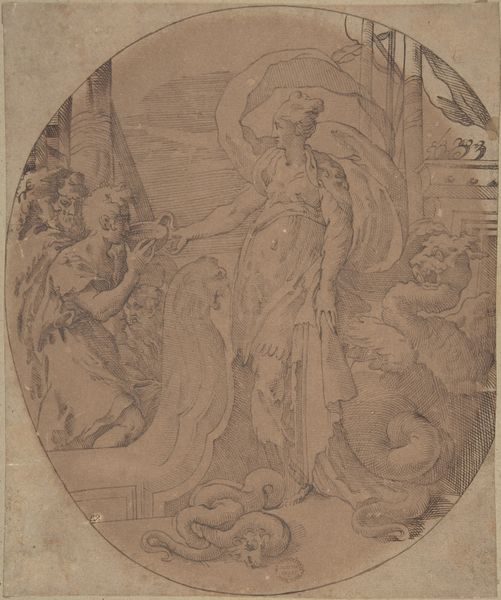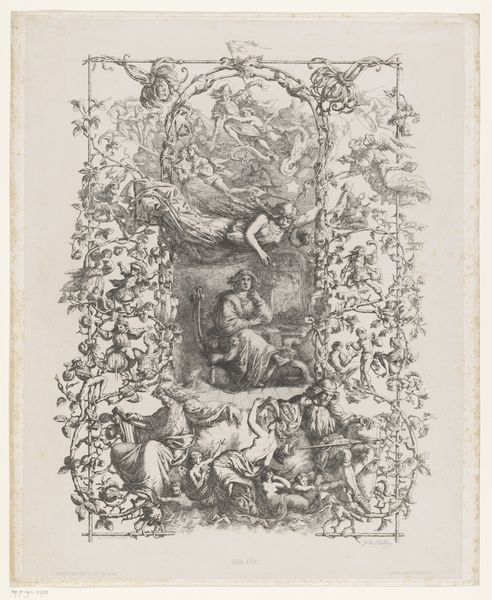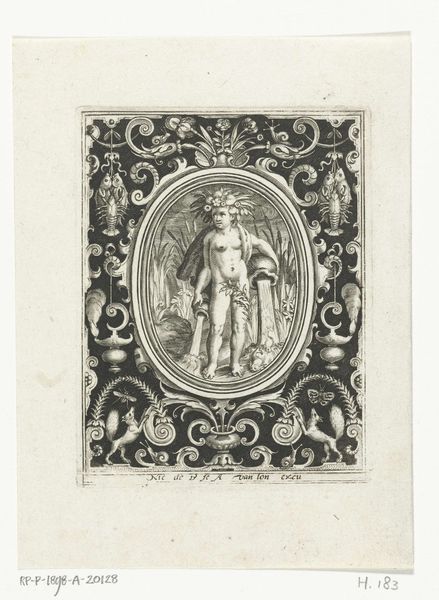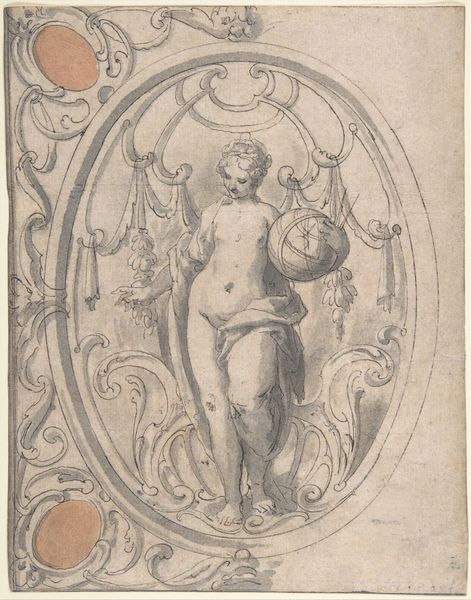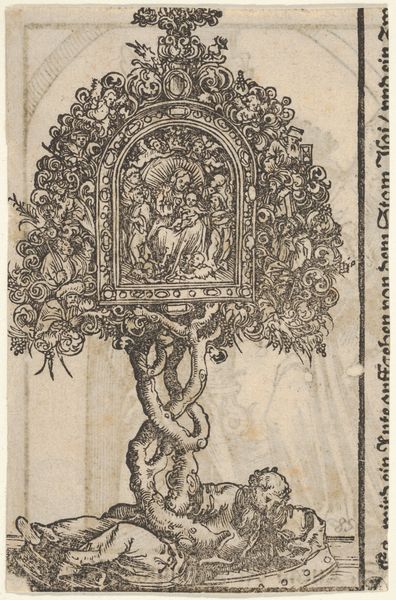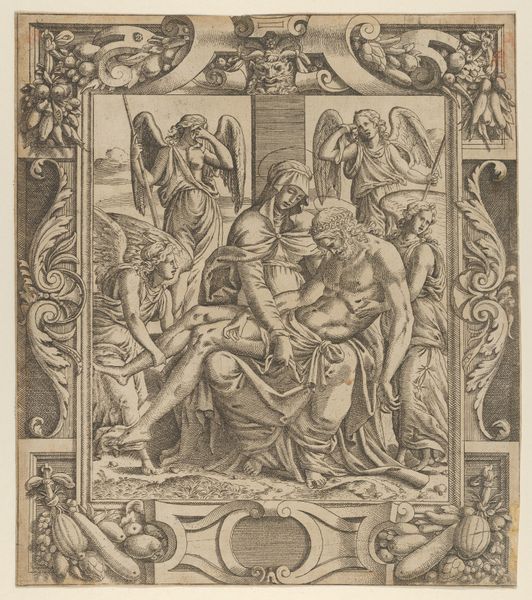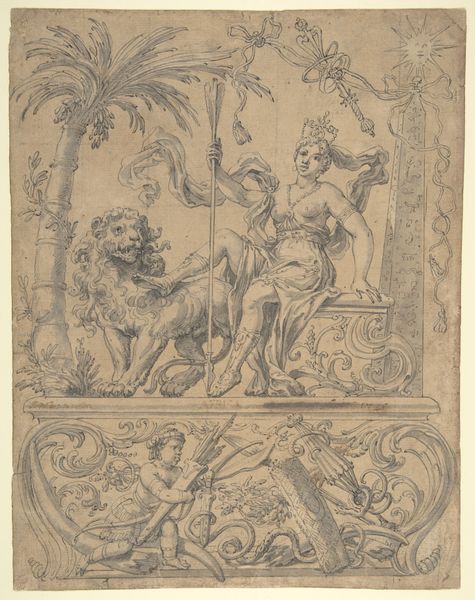
Mercury in a Decorative Frame with Grotesques 1600 - 1630
0:00
0:00
drawing, print, engraving
#
drawing
#
baroque
#
pen drawing
# print
#
landscape
#
figuration
#
history-painting
#
engraving
Dimensions: Sheet: 5 5/16 x 3 9/16 in. (13.5 x 9.1 cm)
Copyright: Public Domain
Curator: What strikes me most is the tension between dynamism and constraint. The figure of Mercury is captured mid-stride within a circle, surrounded by dense, almost overwhelming decoration. Editor: This is “Mercury in a Decorative Frame with Grotesques” by Adriaen Collaert, created between 1600 and 1630. It's currently housed here at the Metropolitan Museum of Art. I find myself drawn to the intricate borders framing the central image. The artist has masterfully used pen and engraving to achieve striking textural contrasts. Curator: Precisely! The grotesque elements, though decorative, hint at darker, hidden aspects of the classical world. They’re not mere ornamentation, but echoes of fears and fantasies lurking beneath the surface. Mercury, god of commerce and communication, becomes an emblem of how the rational and irrational intertwine. The Caduceus reinforces the idea of commerce and negotiation but it could also suggest hidden esoteric knowledge. Editor: Structurally, the work presents a fascinating dialogue between foreground and background, between central figure and framing motifs. The lightness of Mercury contrasts so sharply with the weight and complexity of the borders. There’s a playful contrast as well. He seems almost unaware of the elaborate stage upon which he is set. Curator: Indeed. Mercury often appears as a messenger, linking different realms. In this image, Collaert may be suggesting the way ideas and information traverse both conscious and unconscious dimensions. These are, after all, decorative motifs used by artists, architects, and their patrons. The image speaks to something about creativity, fantasy, the marketplace, and the inner-psyche. Editor: This piece showcases the virtuosity of Baroque aesthetics—an engagement with surface complexity and depth, a weaving of symbolic imagery with pure formal delight. This emphasis pulls in the viewer to find their own harmony. Curator: A testament to how artists can simultaneously celebrate classical ideals while acknowledging the shadowy undercurrents of culture. It feels as much a reflection of its time as it does a window onto timeless themes. Editor: Ultimately, the piece seems like a riddle—an attempt to encapsulate both intellectual movement and material beauty within a single, exquisitely designed object.
Comments
No comments
Be the first to comment and join the conversation on the ultimate creative platform.
